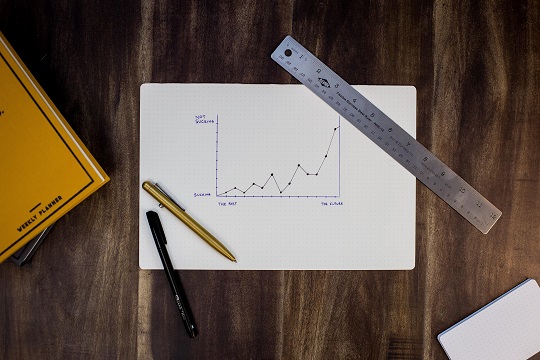In your journey through managing your supply chain, your ability to predict what you’ll need in the future plays a big role in how successful your company will be.
Your job in demand forecasting is to figure out how much of your product or service will be needed in the future.
This is really important for keeping the right amount of things in stock, planning how to make things, and using your resources wisely.
With all the different ways to predict demand, you’re faced with a big question: which method works best for your unique situation?
This article looks into the various methods for predicting demand.
It talks about the good things and the not-so-good things about each method.
It also helps you understand the factors that will help you decide which method is the right fit for your business.
But, before we delve deeper into this topic, make sure you have also followed my LinkedIn account to gain more insights on supply chain management.
Table of Contents
Understanding How You Predict Demand
As you explore ways to predict demand, you’ll come across two main approaches: qualitative and quantitative methods.
Qualitative methods rely on subjective information like expert opinions, market research, and customer feedback to estimate future demand. These methods are really helpful when you don’t have much historical data or when you’re introducing a new product.
Quantitative methods, on the other hand, use historical data and math models to make predictions about future demand. These methods work well when you have a lot of past data to work with, which helps you make smarter predictions.
Qualitative Methods
Using Expert Opinion
When you rely on expert opinion, you’re getting insights from experienced people who know the industry well.
This can be really helpful when you’re dealing with new products or uncertain markets.

Just remember, though, that this method is based on personal views, so it could have mistakes due to biases or unexpected factors.
Doing Market Research
Market research involves collecting data through surveys, focus groups, and careful analysis of customer feedback. It helps you understand what customers like and the trends in the market.
But keep in mind that this process takes time and money, and how accurate the results are depends on how good the data is.
Trying the Delphi Method
The Delphi method is a structured process where experts give predictions.
It combines their opinions while keeping things anonymous to avoid one person’s influence.
Still, it’s important to know that this method can be resource-intensive and might not completely get rid of all biases.
You might also like:
- Quality Expired Raw Materials in FMCG: Dispose or Keep Using?
- Compete or Collaborate with Competitors? Which One is Better?
Quantitative Methods
Using Time Series Analysis
When you dive into demand forecasting, you’ll learn about time series analysis. This means looking at past data to find patterns and trends.
Using methods like moving averages and exponential smoothing can help you understand products with steady demand patterns.
But remember, this method might struggle with sudden changes or strange data.
Trying Regression Analysis
Regression analysis asks you to connect demand with outside factors, like economic indicators or how much you spend on marketing.
This works well when lots of things affect your products.
But keep in mind that it assumes a simple connection between factors, which might not always be true.
Exploring Machine Learning
Machine learning takes you into the world of algorithms like neural networks and random forests.
With big sets of data, these algorithms can find complex patterns and adjust to changes.
They’re super powerful, but they need lots of data to work well. Also, they might be hard to understand because they’re so complex.

As you learn about these different ways to predict demand, you’ll figure out which one suits your business best.
Your choice depends on how your business works and what your products are like.
Things like how quickly your products go bad, how steady the market is, how much data you have, if demand changes with seasons, and how many resources you have all play a part.
Making the right choice will help you predict demand well and manage your supply chain better.
Choosing the Right Method for Your Business
Advantages and Disadvantages
As you’re choosing a way to predict demand, it’s important to know the good and not-so-good things about each method.
Qualitative methods are flexible and adaptable, which is great for situations that change a lot. They help you deal with new things quickly. But remember, even though they’re adaptable, they might not always be very accurate, which could make your predictions uncertain.
On the other hand, quantitative methods use old data to give you more detailed and accurate predictions. They use math and patterns from the past to help you make smarter choices. But these methods might struggle if things change suddenly, and they might not work well for unique situations.
You might also like:
- How to Build a Reliable and Trustworthy Supply Chain Management Team: You Can Lead the Way!
- Unlocking Progress: The Power of Embracing Change
Business Model and Product Traits
When you’re picking the best way to predict demand, you need to really understand how your business works and what your products are like. This helps you make the right choice.
Let’s look at a few things.
Product Type
Think about your products. Some things go bad quickly, so you need short-term predictions.
Other things last a long time, so you need predictions for a while.
Market Changes
The market affects your choice.
If the market is steady and predictable, using time series analysis can be great.

But if the market changes a lot and is unpredictable, using methods like machine learning might be better.
Data Availability
Having enough data matters.
Methods like regression analysis and machine learning need lots of information from the past to make predictions.
But if you don’t have much data, you might need to try other ways.
Seasons and Trends
Think about if your products change with seasons or trends.
For products affected by seasons, time series analysis is a good match.
When you’re launching new products, qualitative methods work well because they use expert opinions and market research.
Resources You Have
Your resources also play a part.
Smaller businesses might want to save money, so qualitative methods could be good. They’re flexible and work well with fewer resources.
On the other hand, bigger companies with more resources can use advanced quantitative methods to get deep insights and make their predictions better.
All these things come together to help you choose the right way to predict demand.
By understanding your products, the market, your data, and your resources, you’ll pick an approach that fits your business style. This will make your demand forecasts better and help you manage your supply chain smarter.
Conclusion
As you explore the complex world of supply chain management, demand forecasting becomes a key foundation.
Choosing the right forecasting method is like reaching a strategic crossroads, where you carefully examine your unique business situation.
By looking closely at your product’s qualities, the changes in your market, the data you have, and the resources available, you’ll find the method that fits best with your goals.
Remember, using a mix of methods can often give you a more complete picture.
Combining different approaches can help overcome limitations that come with just one method.
In a world where things always change, the ability to predict demand gives you an advantage to succeed.
As your business evolves, the power of demand forecasting guides you towards reaching the peak of success.
Hope it is useful!
Please share this article with your colleagues as well, so that they can also benefit from it. Follow my LinkedIn account for more insights on supply chain management. All articles on this blog are free for you to use for any purpose, including commercial use, without the need for attribution.
 by
by 

